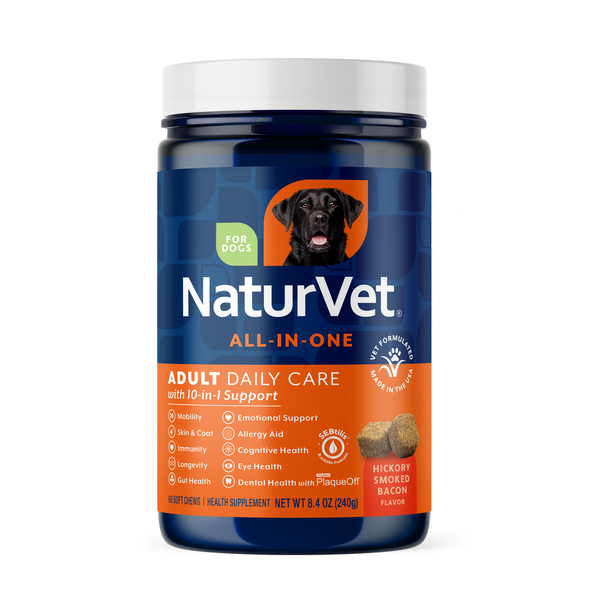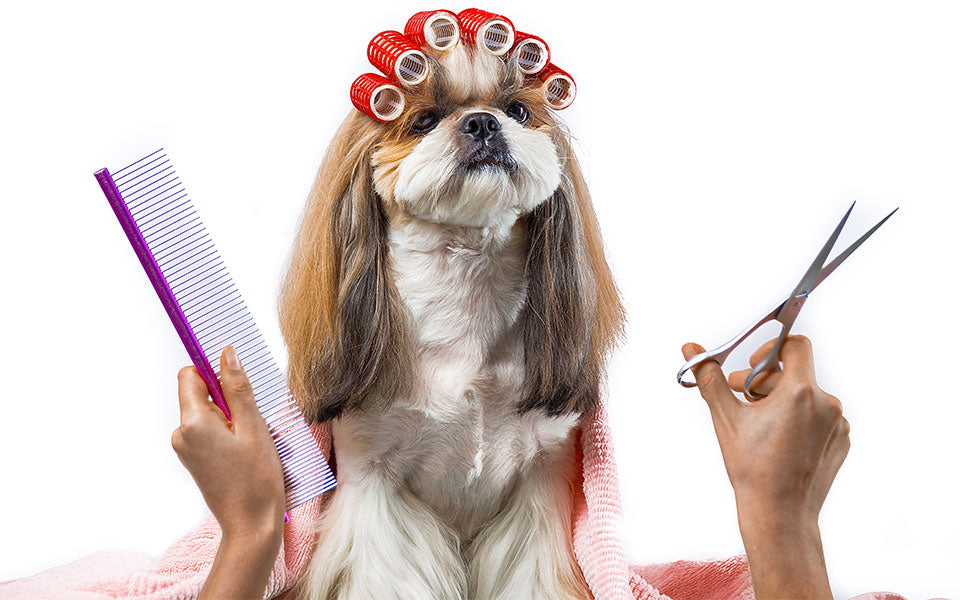5 Tips to Manage Seasonal Dog Shedding
I am asked often by pup parents if there’s some way to keep their pooch from shedding. But you can’t stop dog shedding from happening, and you shouldn’t try, because this is a healthy process all dogs need to go through. However, you can manage it and we have some tips to help, including how to recognize when your pup may have an actual medical problem causing hair loss.
The Biannual Fair of Hair
Many dogs will shed to some degree year round, as hairs mature, die, and need to be replaced by new ones. But plenty of our furry friends will shed bigtime during two seasons of the year. The first is in the Spring, which is typically the biggest, in preparation for Summer. The second is right now, in the Fall.
Now you might say that shedding in the Spring makes sense because a dog needs less fur during the Summer, but why shed in the Fall when it’s getting colder? Shouldn’t she just be growing new hair?
Spring Shedding Vs Fall Shedding
Dogs shed in the Spring not just to eliminate their Winter coat (also called “blowing” their coat) but also to exchange their coat for one more appropriate for warmer weather. Similar to growth for many trees and plants, the amount of daylight, called the photoperiod, is thought to be the biggest factor contributing to dog shedding. When the days get shorter or longer, this triggers changes in hormones that influence hair growth.
As days lengthen in the Spring, the rate of shedding increases, the coat becomes coarser, less dense
Dogs shed in a mosaic pattern, meaning that during the process of shedding, it doesn’t all happen at once. If you take two hair follicles next to each other, each might be in a slightly different phase of turnover. This leads to a patchwork shedding process with scattered but diffusely loosening clumps of hair evenly spread throughout the coat.

All Dogs Are Different
All dogs have to change their haircoat out to some degree. But certain breeds, like Collies, Labradors, Goldens, and Huskies, have two layers to their coats, making their Spring shedding cycle more prolific. At that time, they actually shed both an undercoat and an overcoat that they developed to keep warm in winter. In the Fall, we only see
Well, enough about the “why.” Let’s get to the “how.” As in, “how” do I manage with so much hair I could stuff 5 pillows? Following are 5 tips to help you cope (and for you cat folks out there, these tips work for you too!)
Shedding Tips
1. Nutrition Needed
If your dog’s coat appears dull and broken, and especially if you feel like you’re seeing dead hair and matting year round, you may want to look at the quality of food you’re feeding. Hair needs protein, so look for a
2. Choose Your Weapon
All dogs can use a good brushing, even our short-coated friends. But while some might only need to be brushed once a week, others may need brushing on a daily basis, especially during shedding seasons. For short-coated dogs, use a mitt or glove, like the HandsOn glove. A regular pin and bristle brush will probably also work well. But for the long-haired and double-coated breeds, you’ll need to use something to get the deep undercoat and dead hairs out. For these guys and gals use a slicker brush, which has longer, angled bristles, or a de-shedding tool. Examples of popular de-shedding tools include the Furminator, Shedmonster, and FurGOpet. These tools are all designed to get rid of outer and
3. Suck It Up
Several companies, including Dyson, Shark, and Hoover, make vacuums designed specifically for households with pets, so if you have a prolific shedder, more than one pooch under one roof, or a combination, investing in one of these more pricey models may be worth it. But if a high-end vacuum isn’t in your budget, there are many vacuum hose attachments designed for pet hair removal. Some have rubber bristles that help work hair out of couch cushions and soft surfaces, while others have a rotating brush attachment.
4. Sticky Solutions
When vacuuming doesn’t seem to get it all and there’s still hair left, a lint roller can be an easy way to catch remaining hair. It also helps to get pet hair off of your clothes prior to washing. I keep a lint roller next to my desk to use after every pet’s appointment and it’s not uncommon for me to go through one a month. Another product, called the Brazilian Mat, is kind of like a large extra-sticky lint-roller sheet and is made specifically for getting pet hair off of furniture and other fabric surfaces.
5. Take a Breath of Fresh Air
All that extra shedding leads to excess dander and allergens circulating through the air. Many dog owners notice a heightened issue with their allergies during shedding seasons. A

When It’s Not Just Shedding But Something Else
There are many medical conditions that can appear like shedding but are indicative of another process. In general, this can include endocrine disorders like hypothyroidism, skin infections, and mite infestations to name just a couple. Here are 4 guidelines to follow that can help you recognize a medical problem causing hair loss in your pup that is not caused by normal shedding.
1. Skin redness
Shedding is a normal, healthy process and does not typically involve
2. Single patches of thin hair
Normal shedding usually occurs all over a dog’s body as innumerable hair follicles are going through the process at the same time. If you ever notice just one random area that is losing hair, your vet should see it.
3. Complete hair loss
Normal shedding does not involve complete loss of the hair, termed alopecia. If you notice that your pooch is losing hair to the point that there is just bare skin, a medical issue is likely responsible, and needs to be evaluated.
4. Crusts, bumps, and flakes
Do you notice that your pup’s hair-loss is accompanied by some gross-looking flakes and crusts? Are there small red bumps or pustules on the skin where hair loss is occurring? If so, then you guessed it, time to have your vet check it out.
Hope Things Don’t Get Too Hairy
Shedding season for a pup can last for 2-4 weeks but you can make it. While dog shedding may not be so enjoyable, there is a lot about Fall to enjoy. After you’ve brushed out your pooch, vacuumed the house, and changed the filter on your air purifier, grab a pumpkin spice latte or hot apple cider and curl up with your favorite pup on the couch. Or head to your favorite park and enjoy the changing leaves with your special friend.

JOIN OUR PACK
Follow us @NaturVet on social media to fill us in on any tips we might have missed. And, check out the rest of NaturVet.com. We’ll keep you up to date on all our latest pet resources, supplements, tips and tricks, and more – everything you need to be the best pet parent possible.























